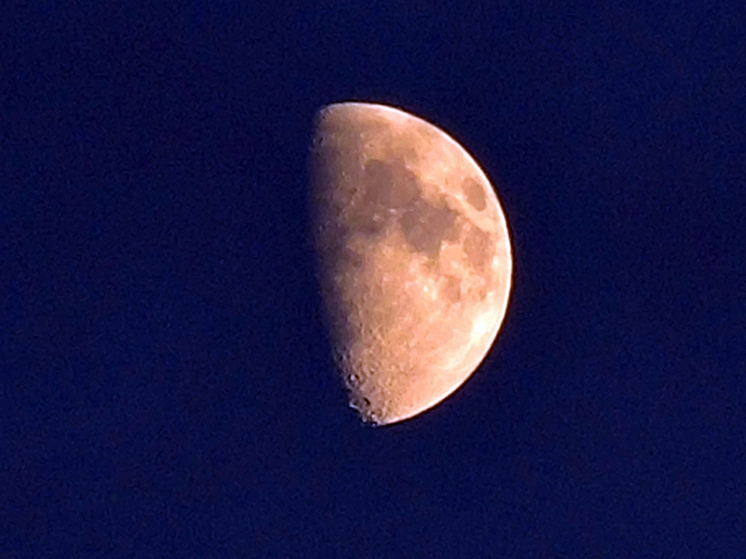The launch of dozens of lunar probes threatens the natural satellite of our planet with irreversible processes
The resources of the Moon could be “destroyed by thoughtless exploitation,” warns NASA. Astronomers say that the launch of dozens of lunar probes could endanger threat to exploration and valuable resources such as sea ice in craters.

Science and business are heading for an astronomical clash over the future exploration of the Moon and the exploitation of its resources, writes The Observer. A celestial showdown threatens to erupt over companies' plans to launch dozens of probes to study the lunar landscape over the next few years.
Funded in large part by NASA's $2.6 billion Commercial Lunar Payload Services (CLPS) initiative, the goal of this extraterrestrial armada is to explore the Moon so that minerals, water and other resources can be extracted to build permanent habitable bases there . Later they will serve as a springboard for manned flights to Mars.
But astronomers warn that the relentless pursuit of lunar exploration could cause irreparable damage to valuable scientific sites. Studies of gravitational waves, observations of black holes, research to detect life on tiny planets orbiting distant stars and other research could be at risk, they say.
“The problem has become urgent,” Martin sounds the alarm. Elvis from the Center for Astrophysics at Harvard and the Smithsonian Institution in an interview with The Observer. “We need to act now because the decisions we make today will set the tone for our future behavior on the Moon.”
This view was supported by astronomer professor Richard Green of the University of Arizona. “We are not trying to block the construction of lunar bases. However, there are only a few promising sites there, and some of them are incredibly valuable from a scientific point of view. We need to be very, very careful where we build our mines and bases.”
Later this month, a working group recently created by the International Astronomical Union and led by Green will meet with UN officials to begin negotiations that will hopefully lead to stronger legislation to protect interplanetary resources. Science magazine recently warned that the 1967 Outer Space Treaty prohibits countries from making territorial claims on celestial bodies, but says nothing about space mining and resource exploitation.
Professor Green outlined the challenges facing scientists: “It has been discovered that several deep lunar craters have been shrouded in shadow since the Moon formed billions of years ago. Sunlight never reaches their bottom, and so they are incredibly cold—probably only a few tens of degrees above absolute zero. And this makes them very valuable from a scientific point of view.”
Craters like these would be ideal for housing delicate scientific instruments — such as infrared telescopes, which need to be constantly cooled — and there are plans to build one that would be powerful enough to observe the distant, dim stars they might orbit. small rocky planets. “These are ideal places to look for life, but they are beyond the capabilities of modern observatories,” says Professor Green.
It is also believed that these dark craters may contain water in the form of ultra-cold ice that has not evaporated , as happened in other places on the Moon during its early history. These sunless icy seas could reveal valuable information about the history of water, perhaps via comets, to the Moon—and to nearby Earth, where it played a key role in the emergence of life.
However, ice-filled craters would also be invaluable to lunar colonizers and would be irresistible targets for companies and astronauts establishing colonies. “Water will be incredibly important for people on the Moon, but we need to make sure it comes from places that are not scientifically essential,” says Martin Elwes.
Radio astronomers have identified another key location. It is located on the far side of the Moon, which is protected from chaotic radio emissions emanating from the Earth. This would be an ideal location for a giant telescope that could detect—without interference—the ultra-low radio waves emanating from the early Universe, which would provide crucial information about the formation of the first galaxies.
However, NASA and other space agencies plan to fly around the Moon with satellites to control robotic rovers and other devices on the lunar surface. Leaking radio signals from them could reduce the sensitivity of the proposed far-side radio telescope, writes The Observer.
Currently, building lunar bases and mines is still a distant goal for space engineers. The search for resources is just beginning, although it will soon make headlines. In addition to Peregrine, many other lunar probes are scheduled to launch this year as NASA's CLPS program begins in earnest. Many of them, such as Peregrine, will be built and launched by private companies and will include Viper, a robotic rover that will explore the moon's south pole; Lunar Trailblazer, which will survey its surface in search of water; and Artemis II, which is planned to send a four-person crew into lunar orbit later this year.
This will identify resource areas that will be critical to building and managing colonies. Many early robotic missions will fail, and the path to lunar exploration will be littered with setbacks. However, industrialization of the Moon now appears to be a realistic prospect. This will help science by reducing launch costs, but, astronomers emphasize, should not entail the reckless destruction of objects that are unique to the Moon and invaluable to science.
“The problem is that changes to UN treaties is taking a long time, so we must act now if we are to have any hope of having international agreements to protect the unique scientific features of the Moon and ensure they are not destroyed through reckless exploitation,” concludes Professor Green.< /p>























































Свежие комментарии